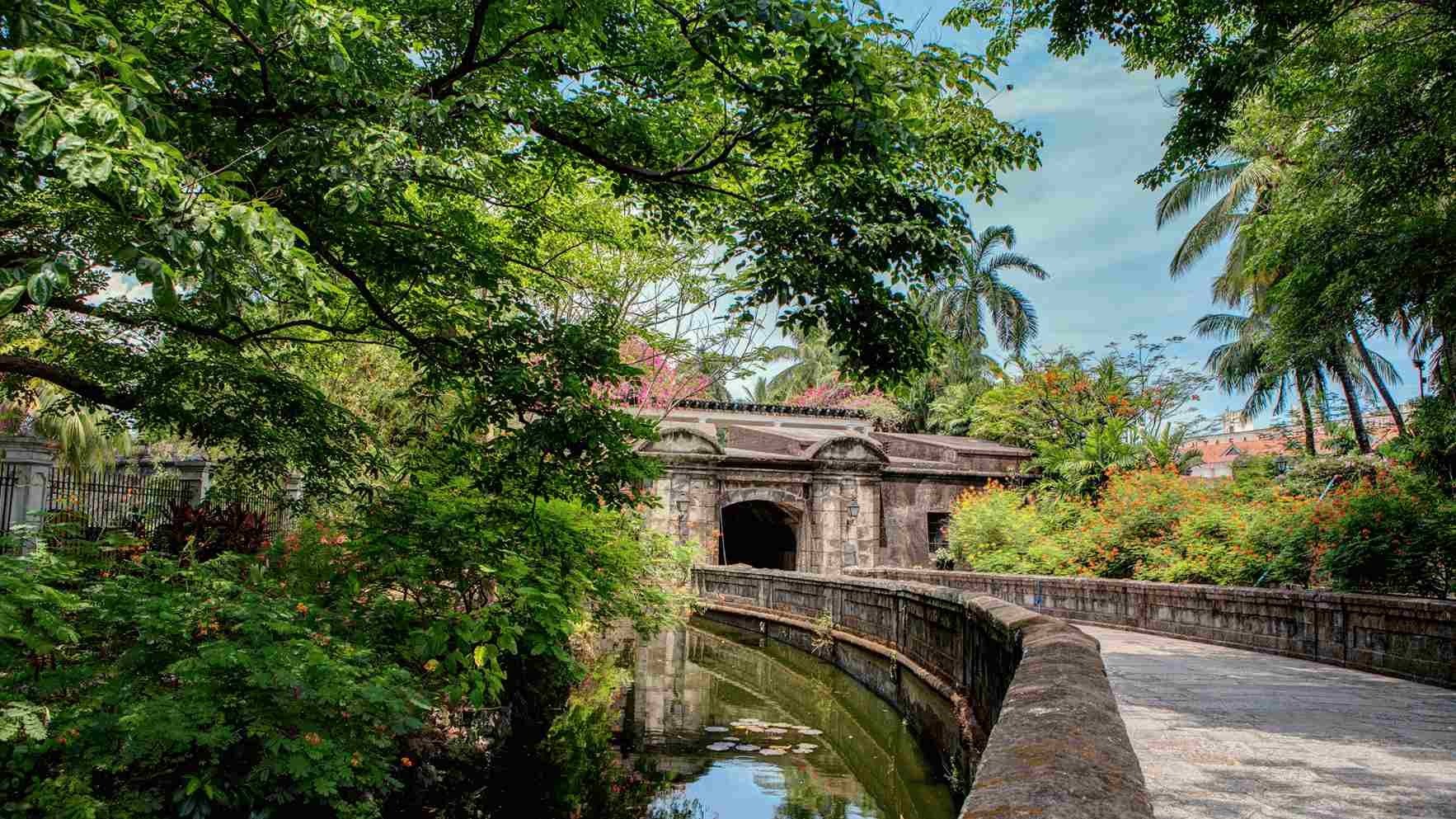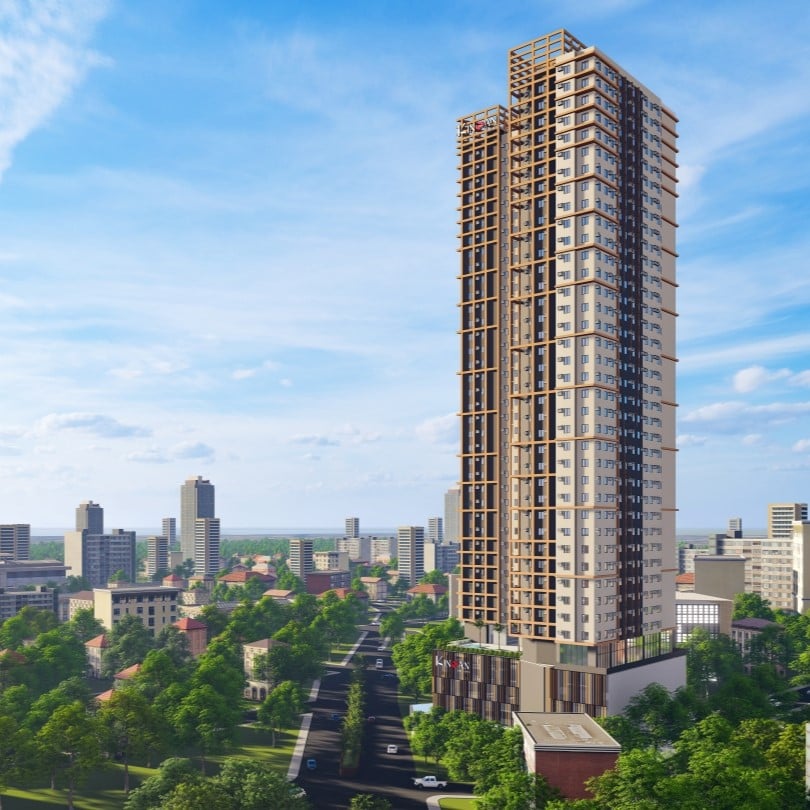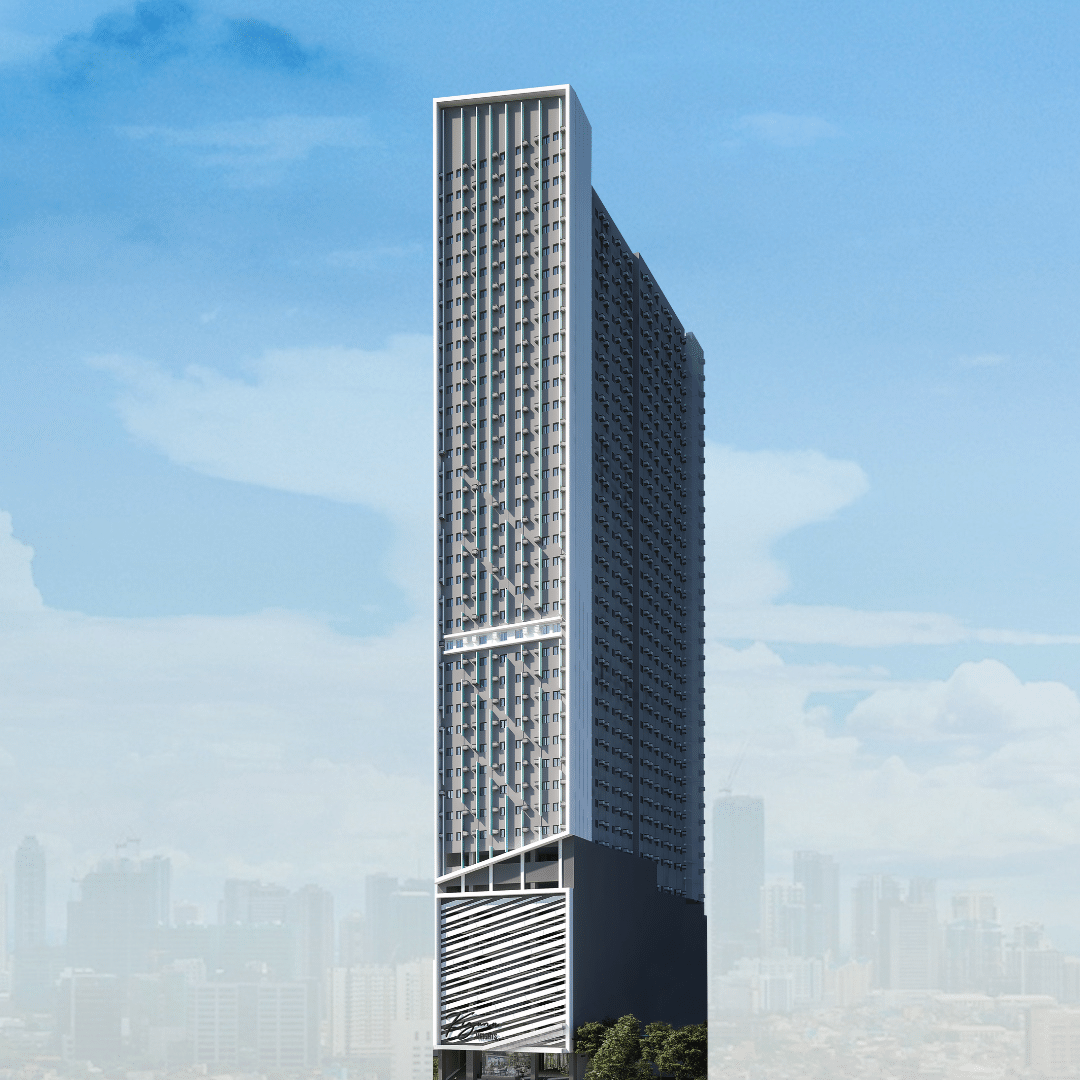Intramuros, the historical heart of Manila, has long been a beloved tourist destination. Steeped in rich heritage and cultural significance, this iconic walled city has captured the imaginations of visitors from around the globe. But how can this already captivating location become even better? The answer lies in the exciting improvements and innovations that are set to transform Intramuros into an even more remarkable destination.
One notable development that promises to enhance the Intramuros experience is the integration of modern amenities and facilities. This fusion of history and innovation will bring a fresh vibrancy to the area while maintaining its unique charm. Imagine strolling through the cobbled streets of Intramuros, with interactive digital displays providing historical information and immersive experiences at key landmarks. This blend of past and present will undoubtedly captivate visitors and create a more engaging exploration of the city's storied past.
Enhanced Accessibility
Efforts to improve accessibility in Intramuros are crucial to enhance the overall visitor experience and create a sustainable mode of traditional form of transportation. Here are some specific development innovations in this regard:
Pedestrian-Friendly Walkways: To encourage walking and make it safer for pedestrians, Intramuros will see the development of wider sidewalks and well-marked crosswalks. These pedestrian-friendly walkways will allow visitors to explore the area at a leisurely pace, enjoying the historic surroundings while staying safe.
Bike Lanes: Intramuros in Manila aims to promote cycling as an eco-friendly and healthy mode of transportation. Dedicated bike lanes will be established within the district, providing cyclists with a safe and convenient way to navigate Intramuros. This initiative not only reduces traffic congestion but also promotes a greener and healthier lifestyle.
Improved Transportation Options: Enhancements to public transportation within and around Intramuros will offer visitors and locals more convenient ways to access the area. This can include the introduction of shuttle services, electric or hybrid buses, or even eco-friendly transportation alternatives such as electric tricycles or pedicabs. The goal is to provide efficient and sustainable transportation choices that cater to different needs and preferences.
Signage and Information: Clear signage and information boards will be strategically placed throughout Intramuros to guide visitors and help them navigate the area. These informational signs will highlight key landmarks, attractions, and directions, making it easier for tourists to explore and discover the historical treasures within the walled city.
Accessibility for Persons with Disabilities: Efforts will be made to ensure that Intramuros becomes more accessible for people with disabilities. This includes the installation of ramps, wheelchair-friendly pathways, and accessible facilities at various locations within the district. These measures will ensure that everyone can fully enjoy the historical and cultural experiences that Intramuros offers.
By implementing these accessibility improvements, Intramuros will become a more visitor-friendly destination. The combination of pedestrian-friendly walkways, bike lanes, improved transportation options, clear signage, and enhanced accessibility for all will create a seamless and enjoyable experience for both tourists and locals alike. Furthermore, these efforts contribute to sustainable urban development by reducing reliance on private vehicles and promoting greener transportation alternatives.
Digital and Interactive Experiences
the integration of digital technologies within Intramuros will revolutionize the way visitors experience the historical significance of the city walls and landmarks and engage with the stories of the city and past. Here are some exciting developments that Intramuros, Manila tour what to expect:
Interactive Displays: Interactive displays will be strategically placed throughout Intramuros, allowing visitors to interact with historical artifacts, maps, and multimedia content. Through touchscreens or gesture-based interfaces, visitors can delve deeper into the history of the area, access archival photos and documents, and explore interactive timelines to gain a comprehensive understanding of the rich heritage of Intramuros.
Augmented Reality (AR) Experiences: AR technology will bring the past to life within the walls of Intramuros. Using smartphones or dedicated AR devices, visitors can overlay digital content onto their physical surroundings. They can witness historical events reenacted through AR animations, see buildings restored to their former glory, or engage in virtual tours guided by historical figures. AR experiences will create a captivating blend of the old and the new, immersing visitors in the sights and sounds of Intramuros' storied past.
Multimedia Presentations: Multimedia presentations will be incorporated into visitor centers and museums, utilizing high-definition screens, projectors, and surround sound systems. These immersive audiovisual displays will provide engaging narratives, showcasing historical footage, interviews with experts, and interactive storytelling techniques to transport visitors back in time. The use of multimedia will make historical information more accessible, engaging, and memorable.
Mobile Apps and Audio Guides: Mobile apps and audio guides specifically designed for Intramuros will offer visitors a personalized and self-guided exploration of the area. These apps can provide detailed historical information, interactive maps, suggested routes, and audio commentary about the landmarks and their significance. Visitors can enjoy a seamless and informative experience at their own pace, tailoring their journey to their interests.
Virtual Reality (VR) Experiences: VR technology will enable visitors to virtually step into the past and experience key historical moments within Intramuros. With VR headsets, they can explore reconstructed historical sites, walk along the walls of Intramuros, or witness significant events in an immersive virtual environment. VR experiences will provide a unique perspective and a deeper connection to the historical context of Intramuros.
These digital innovations will enrich the visitor experience in Intramuros, offering a dynamic and interactive way to learn and engage with the history and culture of the walled city. By integrating interactive displays, AR experiences, multimedia presentations, mobile apps, and VR technology, Intramuros will captivate visitors of all ages, fostering a deeper appreciation for the heritage and significance of this iconic destination.
Restoration and Conservation
Preservation of Intramuros' architectural treasures is indeed a top priority, and ongoing restoration efforts are crucial to maintaining the historical integrity of the district. Here are some key aspects of the restoration and preservation initiatives in Intramuros:
Iconic Landmarks: Intramuros is home to several iconic landmarks, such as Plaza de Roma, and San Agustin Church, the oldest stone church in the country and a UNESCO World Heritage Site. You'll also be accompanied by an expert guide, from whom you'll hear stories of the walled city. Get to know Intramuros' past and what it has been through, from the Spanish colonial era, World War II, up to today. These structures hold significant historical and cultural value. Restoration efforts focus on carefully preserving their original architectural features, including facades, intricate details, and structural elements. By employing expert craftsmen and using traditional building techniques, the aim is to restore these landmarks to their former glory, allowing visitors to marvel at the grandeur of the past.
Fortifications and Walls: The fortifications and walls of Intramuros are integral to its identity as a walled city. These structures not only protect the district but also represent its historical significance. Restoration projects focus on maintaining the structural integrity of the walls, repairing damaged sections, and reinforcing their foundations. The goal is to ensure that the fortifications stand strong for generations to come, providing a glimpse into Intramuros' rich defensive history.
Cultural Sites: Intramuros is home to various cultural sites, including ancestral houses, plazas, and museums. These sites offer a glimpse into the lifestyle and traditions of the past. Restoration efforts aim to preserve the unique architectural styles and historical significance of these sites. By meticulously restoring and maintaining them, visitors can immerse themselves in the rich cultural heritage of Intramuros and gain a deeper understanding of its past.
Preservation Methods: Preservation efforts employ meticulous research, documentation, and conservation techniques. This includes using appropriate materials, such as traditional lime-based plasters and authentic building materials, to maintain the authenticity of the structures. Skilled artisans and experts collaborate to ensure that restoration work adheres to internationally recognized preservation standards, striking a balance between preserving the original character and ensuring structural stability.
Public-Private Partnerships: Preservation and restoration initiatives in Intramuros often involve collaborations between government agencies, cultural organizations, and private entities. These partnerships ensure that restoration projects receive the necessary resources, expertise, and funding to successfully preserve the architectural treasures of Intramuros. Public support and engagement are also encouraged to create a sense of ownership and pride among the local community.
By prioritizing the preservation and meticulous restoration of historic Intramuros' architectural treasures, the district can maintain its unique charm and historical significance. Through ongoing efforts, visitors can experience the grandeur of the past and gain a deeper appreciation for the cultural heritage that Intramuros represents.
Cultural and Artistic Spaces
Intramuros will continue to strengthen its position as a vibrant cultural hub city, providing a platform for artistic expression and promoting local talent. Here are some exciting developments to expect in terms of art, performances, and cultural spaces within the district:
Art Galleries: The establishment of new art galleries within Intramuros will showcase various forms of visual arts, including paintings, sculptures, installations, and multimedia artworks. These galleries will provide spaces for local and international artists to exhibit their works, fostering creativity and encouraging dialogue between artists and visitors. Art enthusiasts will have the opportunity to appreciate diverse art forms and engage in meaningful artistic experiences.
Performance Spaces: Intramuros will see the creation of dedicated performance spaces, such as theaters and open-air stages. These venues will host a range of performances, including theatrical plays, musical concerts, dance recitals, and cultural shows. Local performing arts groups, as well as international artists, will have the opportunity to showcase their talents, captivating audiences with captivating performances that celebrate various art forms. Manila Cathedral can sometimes be a place for performers of theatrical plays.
Cultural Centers: The establishment of cultural centers within Intramuros will serve as focal points for preserving and promoting local traditions, heritage, and cultural practices. These centers will organize workshops, lectures, and demonstrations on traditional arts, crafts, music, and dance. They will also host cultural festivals and events that celebrate the diversity of Philippine culture, providing educational and immersive experiences for visitors.
Artistic Collaborations and Residencies: Intramuros will foster collaborations between local artists, cultural organizations, and institutions. These collaborations may lead to artist residencies, where artists can live and work within the district, drawing inspiration from its rich history and vibrant atmosphere. Such initiatives will encourage artistic exchange, creativity, and the production of new works that reflect the spirit of Intramuros.
Street Art and Installations: Intramuros will embrace street art and installations as forms of artistic expression. Blank walls and public spaces will be transformed into colorful murals and thought-provoking installations, adding vibrancy to the district's streetscapes. Street art festivals and events may also be organized to engage the local community and visitors in the artistic process.
By establishing more art galleries, performance spaces, and cultural centers, Intramuros will become a thriving hub of artistic and cultural activities. These venues will not only provide platforms for local talent to showcase their creativity but also attract art enthusiasts, tourists, and the local community to experience the rich artistic heritage and history of the district. Intramuros will serve as a catalyst for creativity, fostering a vibrant arts scene and promoting cultural appreciation within Manila's historic walled city walls.
Sustainable Development
Intramuros recognizes the importance of sustainable urban development and is committed to minimizing its environmental footprint. Here are some key initiatives to expect in Intramuros' journey toward sustainability:
Energy-Efficient Infrastructure: Intramuros will prioritize the implementation of energy-efficient systems and infrastructure. This includes the use of renewable energy sources, such as solar panels, to power buildings and facilities within the district. Energy-efficient lighting systems, smart grids, and energy management technologies will be employed to optimize energy consumption and reduce carbon emissions.
Waste Management Systems: Effective waste management practices will be put in place to minimize the environmental impact of Intramuros. These initiatives may include recycling programs, composting facilities, and the promotion of responsible waste disposal among residents, businesses, and visitors. By adopting sustainable waste management systems, Intramuros will strive to reduce waste generation and promote a cleaner and healthier environment.
Green Spaces and Urban Biodiversity: Intramuros will prioritize the creation of green spaces and the preservation of existing natural elements. Parks, gardens, and tree-lined streets will be incorporated into the district's urban design. These green spaces will not only enhance the aesthetic appeal of Intramuros but also contribute to urban biodiversity, providing habitats for native plant and animal species.
Water Conservation and Management: Intramuros will implement water conservation measures to ensure the responsible use of water resources. Initiatives may include the installation of water-saving fixtures, rainwater harvesting systems, and the promotion of water-efficient practices among residents, businesses, and visitors. Water management strategies will aim to reduce water consumption, improve water quality, and mitigate the risk of flooding within the district.
Sustainable Transportation: Intramuros will encourage sustainable transportation options to reduce reliance on private vehicles and minimize air pollution. Initiatives may include the promotion of walking and cycling as preferred modes of transport within the district. Additionally, the development of electric vehicle charging stations and the introduction of eco-friendly public transportation options, such as electric tricycles or buses, will further contribute to sustainable mobility.
Environmental Education and Awareness: Intramuros will prioritize environmental education and awareness programs to engage residents, businesses, and visitors in sustainable practices. This may involve organizing workshops, seminars, and outreach campaigns to promote eco-conscious behavior and foster a culture of sustainability within the community.
By implementing these sustainable practices, Intramuros aims to become a model for responsible urban development. The district will serve as a vibrant and ecologically responsible destination, showcasing how historic sites can be preserved while minimizing their impact on the environment. These initiatives ensure that Intramuros remains a sustainable and enjoyable place for future generations to experience and appreciate.
Culinary Experiences
Intramuros will not only captivate visitors with its rich history and cultural heritage but also tantalize their taste buds with a diverse range of dining options. Here's what you can expect in terms of culinary experiences in Intramuros:
Traditional Filipino Cuisine: Intramuros will showcase the richness of traditional Filipino cuisine, offering visitors a chance to savor authentic local flavors. Restaurants and food stalls will serve classic Filipino dishes such as adobo, sinigang, kare-kare, and lechon. These establishments will focus on preserving traditional cooking techniques and using locally sourced ingredients to provide an immersive and delicious dining experience.
Fusion and Modern Cuisine: Intramuros will also feature restaurants and cafes that blend traditional Filipino flavors with modern culinary techniques. Chefs will creatively fuse international influences with local ingredients, resulting in unique and exciting dishes. Visitors can expect to indulge in innovative flavor combinations and contemporary presentations that showcase the evolving culinary landscape of the Philippines.
Artisanal Cafes and Bakeries: The district will embrace the café culture, with the emergence of charming and cozy cafes and bakeries. These establishments will serve freshly brewed coffee, specialty teas, and delectable pastries. Visitors can enjoy a relaxing break while immersing themselves in the historic ambiance of Intramuros, savoring artisanal treats made with care and attention to detail.
Food Markets and Street Food: Intramuros will come alive with bustling food markets and street food stalls, offering a wide array of local delicacies. Visitors can explore these vibrant food markets, sampling an assortment of street food favorites like fish balls, kwek-kwek, and halo-halo. These culinary hotspots will allow visitors to experience the lively atmosphere of local food culture and indulge in affordable yet delicious treats.
Cultural Dining Experiences: Intramuros will offer unique dining experiences that blend food, history, and culture. Visitors can enjoy themed dinners that showcase the cuisine of specific regions in the Philippines, accompanied by cultural performances and traditional music. These immersive dining experiences will provide a deeper understanding of Philippine traditions and create unforgettable memories.
Food Festivals and Events: Intramuros may host food festivals and culinary events throughout the year. These events will bring together local chefs, food enthusiasts, and visitors to celebrate the vibrant culinary scene of the district. Visitors can experience the diversity of Filipino cuisine, attend cooking demonstrations, and participate in interactive workshops that highlight the flavors and techniques of the Philippines.
By offering a diverse range of dining options, from traditional Filipino cuisine to fusion creations and artisanal cafes, Intramuros will provide a delightful culinary journey for visitors. The district's food scene will showcase the unique flavors and culinary heritage of the Philippines, ensuring that every dining experience in Intramuros becomes a memorable part of the overall visit.
Community Engagement
Community involvement and engagement are essential for the inclusive and sustainable development of Intramuros. By collaborating with local residents, businesses, and stakeholders, the district can harness the collective knowledge, skills, and experiences of the community. Here's how community involvement will shape the development of Intramuros:
Participatory Planning: The community will have a voice in the planning process, allowing residents, businesses, and stakeholders to contribute their insights and ideas. Public consultations, workshops, and forums will be conducted to gather feedback and suggestions on various aspects of development. This participatory approach ensures that the needs, aspirations, and concerns of the community are considered, leading to more inclusive and people-centric development plans.
Empowering Local Businesses: Intramuros will prioritize the involvement of local businesses in its development initiatives. Opportunities for entrepreneurship, local employment, and skill development will be created, enabling residents to actively participate in the economic growth of the district. Collaboration with local businesses will also ensure that the unique character and heritage of Intramuros are preserved, with a focus on promoting authentic local experiences. From treasure ships to invading armies, colonials to celestials, this is a walk that is dripping with history and everything about Manila!" Itinerary: Fort Santiago, Old City Walls, Plaza Roma, Manila Cathedral, San Agustin, Barrio San Luis. Tour duration: 2 to 2.5 hours. Rates: PHP 1,750/head; PHP 1,950.00 on Weekends and Holidays; PHP 1,800.00/head night tour (after 5:00PM). Rates subject to change at any time. Get to know Intramuros' past and what it has been through, from the Spanish colonial era, World War II, up to today. Get to know the Walled City of Intramuros in this one-of-a-kind tour in Metro Manila Learn about the historical landmarks around the area and their rich history dating back to the Spanish era Listen to your enthusiastic local guide who will make exploring Intramuros fun
Community Programs and Events: Intramuros will organize community programs and events that foster a sense of belonging and pride among residents. These initiatives may include cultural festivals, art competitions, sports activities, and educational programs. By encouraging community participation and showcasing the talents and achievements of residents, these events will strengthen the community fabric and promote social cohesion within Intramuros.
Heritage Conservation and Restoration: The involvement of the community is crucial in the preservation and restoration of Intramuros' heritage. Residents and businesses can contribute to the maintenance and care of historical structures, public spaces, and landmarks. Community-led initiatives, such as heritage walks, volunteer programs, and educational campaigns, will raise awareness about the importance of preserving Intramuros' cultural and architectural treasures.
Social Impact Initiatives: Intramuros will actively engage in social impact initiatives that address the needs of the surrounding communities. This may involve collaborations with local organizations and NGOs to implement programs related to education, health, livelihood, and environmental sustainability. By addressing social challenges and fostering community development, Intramuros can become a model for inclusive growth and social responsibility.
By involving and empowering the community, Intramuros can ensure that its development benefits the people who live and work within the district. Collaboration with local residents, businesses, and stakeholders will foster a sense of ownership, pride, and collective responsibility for the district's future. Together, they can create a vibrant and inclusive community that embraces the unique heritage and character of Intramuros.
These development innovations will undoubtedly breathe new life into Intramuros, preserving its historical significance while embracing progress and modernity. As this iconic destination evolves, it will continue to captivate visitors with its timeless charm, rich heritage, and an array of exciting experiences that reflect the unique character of Manila's historic walled city.
In addition to these technological advancements, Intramuros is set to welcome a new wave of residential properties that will further elevate the area. Among these properties are the Vista Residences developments, including Sky Arts, Kizuna Heights, and GL Taft Plumeria Heights. These residential projects not only provide luxurious living spaces but also serve as gateways to the rich tapestry of Intramuros.
Sky Arts, for instance, offers modern condominium living with stunning panoramic views of Manila's skyline. Its proximity to Intramuros allows residents to immerse themselves in the historical charm of the area while enjoying contemporary comforts and amenities. With its thoughtful design and convenient location, Sky Arts provides an ideal retreat for those seeking a harmonious blend of old-world charm and contemporary living. Kizuna, another Vista Residences project near Intramuros, boasts a unique Japanese-inspired architectural design. This residential development embodies the spirit of unity and camaraderie, with shared spaces that foster a sense of community. Residents can enjoy a peaceful and serene environment within close proximity to Intramuros, making it a perfect residence for those seeking tranquility and cultural immersion. GL Taft and Plumeria Heights, on the other hand, offers a modern and stylish living experience. Its prime location near Intramuros grants residents easy access to the historical landmarks and attractions within the walled city. With its range of amenities and well-designed living spaces, GL Taft and Plumeria Heights provides a comfortable urban lifestyle in the heart of Manila's heritage district.
As Intramuros continues to evolve, these new residential developments bring not only a place to call home but also a chance to be a part of the revitalization of this iconic destination. They contribute to the overall vision of creating a dynamic and sustainable community within the historical context of Intramuros.
For more information on Vista Residences, email [email protected], follow @VistaResidencesOfficial on Facebook, Twitter, Instagram, and YouTube, or call the Marketing Office at 0999 886 4262 / 0917 582 5167.










